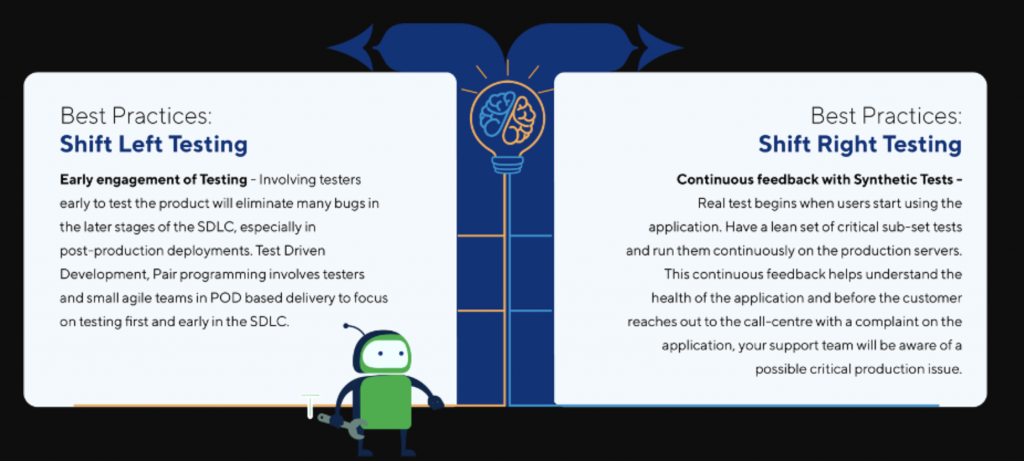There was time when doing entire testing and maintaining quality was the job of a tester and QA team, but now we can see a paradigm shift, maintaining quality is not only the part of QA but also becoming responsibility of the team member associated in other contributory roles.
When we talk about quality based on software development process, there are two essential parameter.
- Shift-Left Testing: Where testing begins parallel to the development
- Shift-Right Testing: Where the horizon of testing is broadened after receiving feedback from the end-users
Shift-Left Testing
Shifting towards left mean, start doing it earlier. Rather than starting testing in test phase, we perform it at an early stage, thus shift left, the same can be implied for Agile Environment if the team is not converting the sprint to mini waterfall
The Goal is to prevent defect and mitigate risk, rather than dealing with whole load of bugs and critical issue post development.
Shift left often encourages the use of Behaviour Driven Development (BDD) and Test Driven development (TDD) to help to prevent defects. Also considering the fact defects are less costly when caught early.
Reasons to adopt Shift-left
· Improved Design: Continuous Shift-left testing and rigorous brain storming session helps identifying roadblocks, bottleneck and possible failures. This might lead to new design but they are improved version of original idea.
· Quality of Release: Bugs are found and fixed early, the model attention to quality and details. Defects found this can be fixed easily.
· Punctuality with release: When there is improved quality and unpresented scenario are taken care, the team will always be confident in their release.
Shift Right Testing
Shift right testing begins testing task from the right, Obtaining the feedback continuously from users. The testing is to ensure stability, performance and usability criteria for the end users.
Reasons to adopt Shift-Right
· Enhancing customer experience: By shifting-right customer feedback is gathered and grouped. The issue is then translated into the technical term and business language. This helps segregating the issues and improve the customer experience
· Scope of Automation: It is easier to automate, once the application is stable. Shifting testing right enables you to do that
· Enhanced Coverage: A Shift-Right approach to testing empowers to test more, test on-time and test late. That translates to lesser bugs (at a basic stage), better quality (at an elevated stage) and delighted customer experience.
